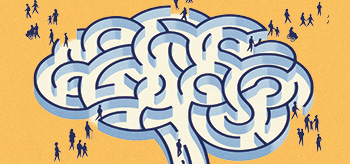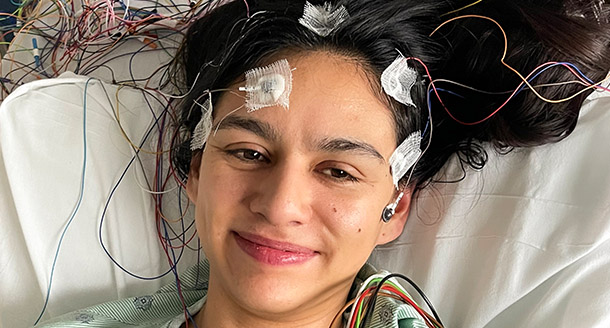Overview
Glioblastoma (GBM), IDH-wildtype, is an invasive tumor with poorly defined boundaries that originates from astrocytes. Astrocytes are a type of star-shaped glial cell in the brain and spinal cord. Glial cells serve to provide the “glue” to maintain the structure of the brain and spinal cord, as well as maintain the environment around the neurons to enable optimal brain function. As such, GBM is part of a group of tumors called gliomas, and it is often categorized as a “high-grade glioma” because of its aggressive growth and infiltration into the brain. Glioblastoma, IDH-wildtype, is most often located in the brain’s cerebral hemispheres and can also occur in the brainstem, cerebellum, and spinal cord. Signs and symptoms largely depend on the tumor’s location, but they can include one-sided weakness, difficulty with speech or language, and vision changes. Seizures occur in as many as half of those with glioblastoma. Headache, nausea, and vomiting may occur due to increased pressure within the skull. Behavioral and cognitive changes are also common, especially in older adults with glioblastoma. Glioblastomas are the most common type of primary malignant brain tumor.
2021 WHO CNS Grade
A tumor grade describes how normal or abnormal tumor cells appear under a microscope. In lower grade tumors like grade 1, the cells look close to normal. In higher grade tumors like grade 4, the cells look more abnormal. Glioblastoma, IDH-wildtype is considered grade 4.
Statistics
Please note that these statistics look at diagnoses from 2017 to 2021 which are the most currently available at this time. In 2021, however, the diagnostic criteria for glioblastoma changed in the WHO classifications. These statistics represent the previous diagnostic criteria for glioblastoma and do not necessarily represent glioblastoma, IDH-wildtype.
- Percent of All Brain and Other CNS Tumors: 13.9%
- Average Annual Age-Adjusted Incidence Rate: 3.27 per 100,000
- Median Age at Diagnosis: 66 years
Survival
Survival rates compare the percentage of people living with a particular diagnosis at a particular point in time compared to the general population.
Please note that these statistics represent all diagnoses of nerve sheath tumors including but not limited Please note that these statistics look at diagnoses from 2017 to 2021 which are the most currently available at this time. In 2021, however, the diagnostic criteria for glioblastoma changed in the WHO classifications. These statistics represent the previous diagnostic criteria for glioblastoma and do not necessarily represent glioblastoma, IDH-wildtype.
- One-Year Relative Survival Rate: 43.2%
- Five-Year Relative Survival Rate: 7.1%
- Ten-Year Relative Survival Rate: 4.5%
Treatment Options
Every person living with a brain or CNS tumor is unique. If you have been diagnosed with a brain or CNS tumor and would like to better understand your treatment options, it is important to work with your health care team to decide the best course of treatment for you. You may also consider getting a second opinion or reaching out to our Personalized Support and Navigation team to learn more.



